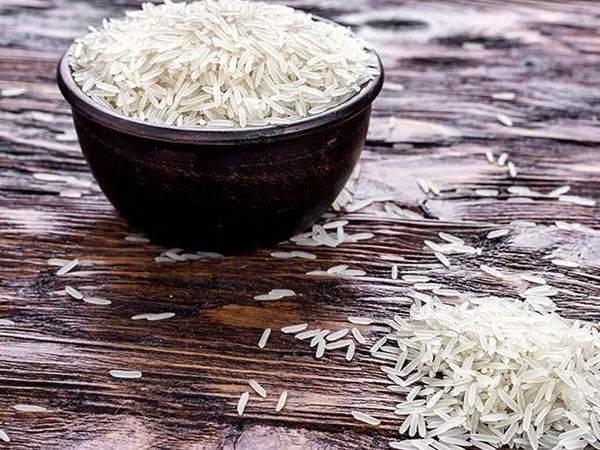In Maniche, a commune in southern Haiti, rice production is rebounding after years of decline linked to trade policies imposed by international financial institutions, the influx of imports— particularly subsidized rice from the United States, climate disasters and insufficient state support. With the help of the local group OMDIS, farmers are transforming once-abandoned paddies into productive rice fields again using modern techniques.
MANICHE, Haiti — At dawn, Samuel Altidor heads to his rice fields in this rural commune tucked in Haiti’s southern peninsula. As he checks water levels and surveys for pests, he joins dozens of other farmers reviving a crop central to Haitian meals and culture: rice.
“Rice production allows us to eat better and provide for our family’s other needs—like our children’s school tuition, books and uniforms,” Altidor, father of five, told The Haitian Times with a grin.
“Before, we were stuck with just mayi [corn meal] or imported rice— we couldn’t even afford to buy anymore.”
Now, with support from the Manichean Organization for South Integrated Development (OMDIS, as per its French acronym), dozens of farmers, like Altidor, are reviving the paddies using a combination of traditional and modern techniques.
“We have received substantial assistance from OMDIS to boost rice production in the region,” Altidor, 45, said.
“Rice production allows us to eat better and provide for our family’s other needs—like our children’s school tuition, books and uniforms.” - Samuel Altidor, A farmer in Maniche
In Maniche, a southern Haitian commune about 120 miles from Port-au-Prince, farmers are working to revive rice farming after decades of decline caused by international trade policies, natural disasters and lack of state support. With the support of grassroots group OMDIS, they’re using modern techniques to restore a critical part of Haiti’s food sovereignty—pushing back against decades of reliance on foreign imports.
How did Haiti lose its rice?
Until the early 1990s, Haiti was still producing enough rice for its domestic needs. The country gradually lost its rice production due to a combination of factors, including trade liberalization policies imposed by international financial institutions to facilitate the influx of cheap imports and minimal government investment.
As a result, subsidized United States rice, branded as “Diri Miami” or “Miami Rice,” has captured the local market, contributing to a subsequent decline in national rice farming. Natural disasters, sociopolitical instability and inadequate infrastructure further worsened this shift.
As far as Altidor can remember, it all began in the late 1980s, when the International Monetary Fund (IMF) and the World Bank, he recalled, agreed to provide Haiti’s government with substantial loans in exchange for slashing tariffs on imported goods, with “made in USA” products benefiting massively by a margin of 82% to 90%.
By 1995, as part of the U.S.-backed conditions for restoring then-President Jean-Bertrand Aristide to power after being deposed by a bloody military coup in September 1991, the World Bank and the IMF pressured Haiti to reduce import tariffs on rice specifically from 50% to 3%. At the same time, the U.S. government had been subsidizing American rice-producing farmers, enabling them to export at very low prices to countries like Haiti.
In 2010, former President Bill Clinton publicly apologized for forcing Haiti to drop tariffs on imported subsidized U.S. rice during his time in office. He admitted that his administration’s policies wiped out rice farming, seriously damaging Haiti’s ability to be self-sufficient and spurring a food crisis.
“It may have been good for some of my farmers in Arkansas, but it has not worked. It was a mistake,” Clinton said before the U.S. Senate Foreign Relations Committee. “I have to live every day with the consequences of the lost capacity to produce a rice crop in Haiti to feed those people, because of what I did.”
As cheaper rice from the US began to flood the country, urban consumers initially benefited from the low-cost imports; however, the massive imports ultimately led to a decline in national rice production. Today, according to a recent U.S. Department of Agriculture report, Haiti imports nearly 90% of the rice it consumes—purchasing 475,000 metric tons mainly from the U.S., Pakistan, Taiwan and the Dominican Republic out of a forecasted 530,000 metric tons needed for local consumption.
“We prepared demonstration plots so farmers could compare their traditional methods with SRI. They saw the difference immediately.” - Francisco Nogaus, Agronomist from OMDIS
“Haitian farmers like us in Maniche have borne the brunt, facing the nonstop flow of U.S. rice imports—selling at a fraction of the price of rice grown in-country,” the farmer said.
In recent years, sociopolitical instability and gang violence have accelerated the decline in rice production further. For example, in the Artibonite Department, once known as Haiti’s rice basket—producing 70-80% of the national output, most farmers have been forced to abandon their rice fields due to increasing insecurity, extortion and fear for their safety.
Data from the World Food Programme (WFP) estimates that, as of 2023, up to 3,000 hectares of farmland have been left deserted since 2018, as farmers have moved to cultivate in less productive and smaller areas in the Artibonite region.













© Copyright 2025 The SSResource Media.
All rights reserved.